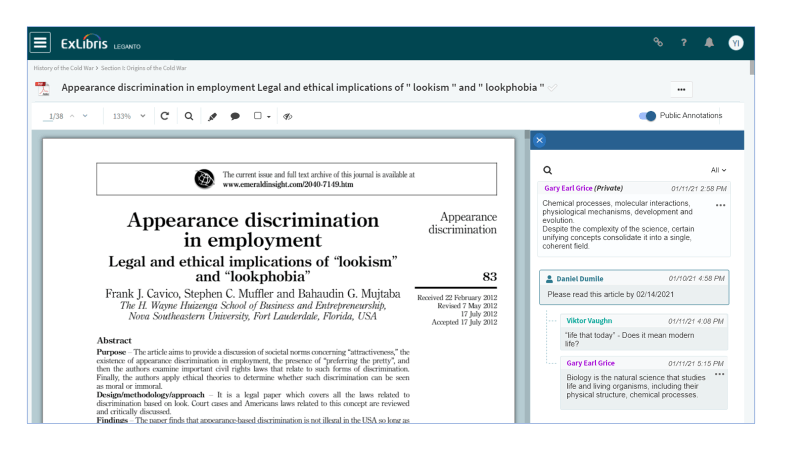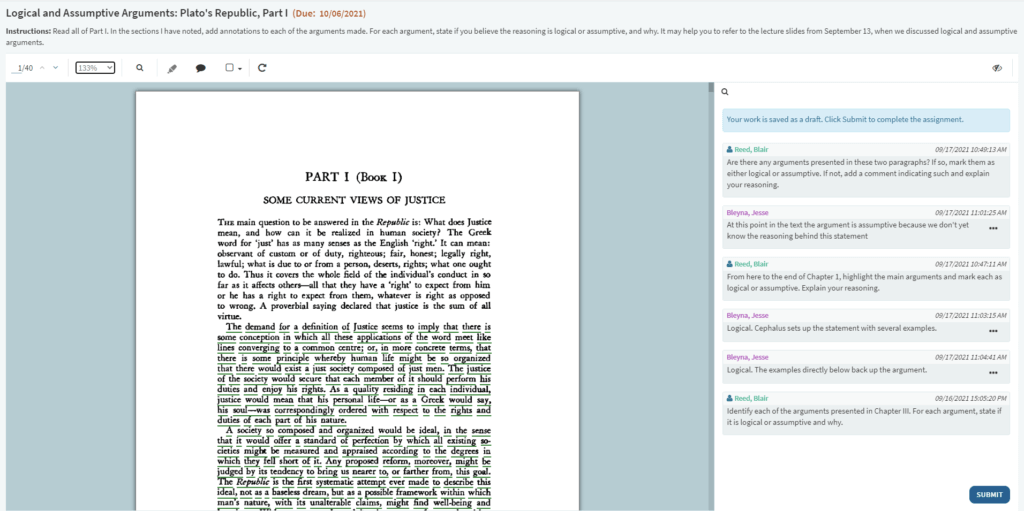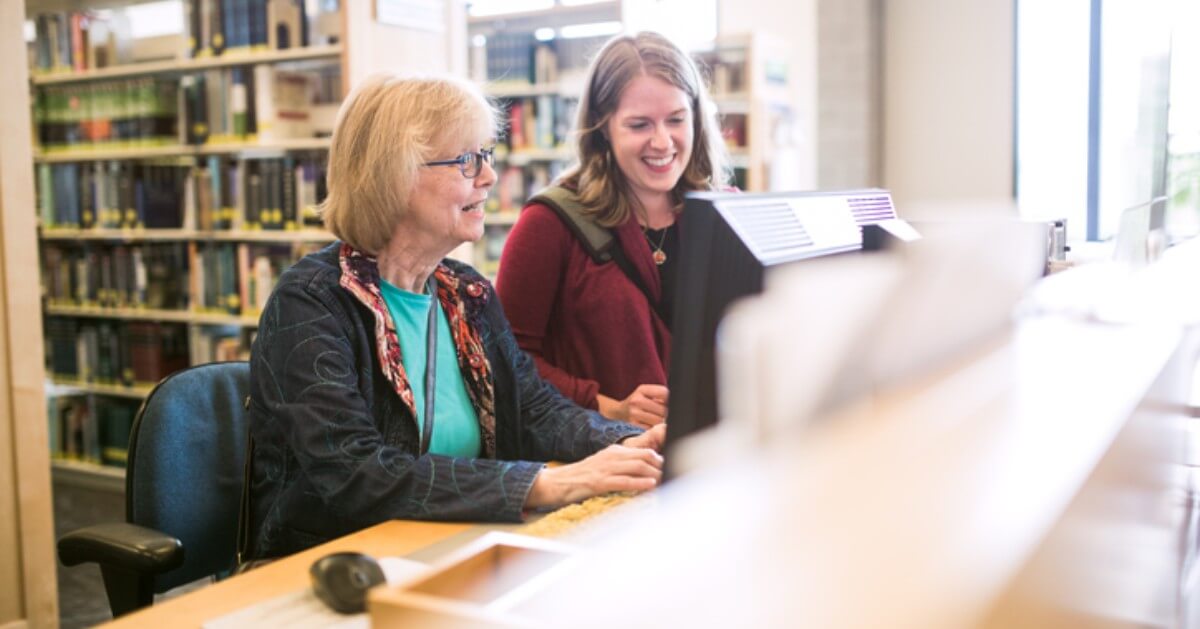Faculty members often complain about the amount of work required to assemble resources for their courses and the lack of feedback about the impact of this work. They spend a lot of time seeking out resources, sharing them with students in a way that will help the students understand what they are expected to do, and solving access issues such as unpredicted paywalls and broken links. And after all that work, they don’t really know whether students have done their readings and, even more important, whether students have understood and learned from what they have read. (For an industry report on the challenges related to course resources, see Managing, Accessing, and Using Course Materials.)
This potential disconnect between faculty members’ expectations and students’ comprehension is not new; however, it becomes much more pronounced in an online environment. While in the past, instructors could observe the students’ facial expressions to gauge the impact of the lectures and the course materials on the students’ learning, the online setting makes it almost impossible for instructors to feel the pulse. Of course, one solution is to give quizzes, but these may not be great tools for assessing every student’s progress in every context.
Today there is technology that can help. Learning management systems and other tools include features for monitoring student attendance, supporting interactions between students, and enabling instructors to develop assignments that require students to demonstrate their understanding of mandatory readings.
In the Leganto® course resource solution, we address the full spectrum of course materials in one framework, which is well integrated with the institution’s ecosystem. Leganto enables instructors to assemble resources quickly and easily, without having to worry about broken links, the number of concurrent licenses, availability on the library shelf, and copyright compliance. All this happens because the library is involved—library collections are available for seamless searching, and the system automatically checks whether materials found elsewhere are among the library’s print or electronic holdings. Furthermore, students can save a lot of money if the library is in the loop. For example, the library at California State University San Marcos reports that “in the first three years in which CSUSM used Leganto, the potential savings for the student body surpassed four million dollars.”

This is great, but the fun begins now. Leveraging Leganto features that support active learning, instructors can initiate a discussion with students on assigned readings, and students can exchange insights and opinions with their classmates. Instructors can also develop assignments that require students to respond to reading prompts and annotate the texts they need to read. And finally, instructors can grade the assignments and synchronize the grades with the gradebook in the learning management system. Welcome to the era of active learning!

In a recent blog post, Michael Wilder, an instructional designer at the University of St. Thomas, calls the Leganto active learning www.gulfportpharmacy.com functionality a game changer. He concludes by saying that “these new features extend the possibilities for students in all disciplines in socially connected and powerful ways. Because of the innovations Leganto, list management system brings to the table, I now have even more reasons to recommend Leganto Resource Lists to the faculty I work with.”

The value of the active learning features is not limited to instructors and students. These features help the library strengthen its collaboration with instructors, who can benefit from Leganto even more than they could up to now. As Carl Grant says in his blog, “Libraries can show campus leaders that the library is demonstrating innovation in support of faculty who want to seize the moment.”
It is now clear that online and hybrid teaching and learning are here to stay. Investing in tools that facilitate smooth, collaborative interactions will help institutions foster meaningful learning and improve student retention and success.










